Laminoplasty
Laminoplasty is a procedure done to open the space for the spinal cord from the posterior (back) of the neck. This procedure might be chosen when the patient has spinal cord compression, but for some reason, decompression from the front would be too gangerous.
Spinal cord dysfunction, which is referred to as myelopathy, can include symptoms like problems with balance and walking, bowel and bladder control, and weakness of the arms and legs.
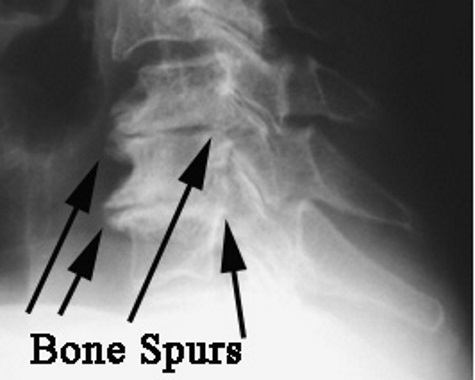
Bone spurs can form on the front of the cervical spine, but when they form on the posterior (back) side of the vertebral body, they can contribute to spinal cord compression.
In this cross section from a CT scan, the large bone spur can be seen. This scan is from a myelogram, where dye was injected in the spinal fluid. A thin rim of a light gray (the dye) can be seen around the darker shadow of the spinal cord.
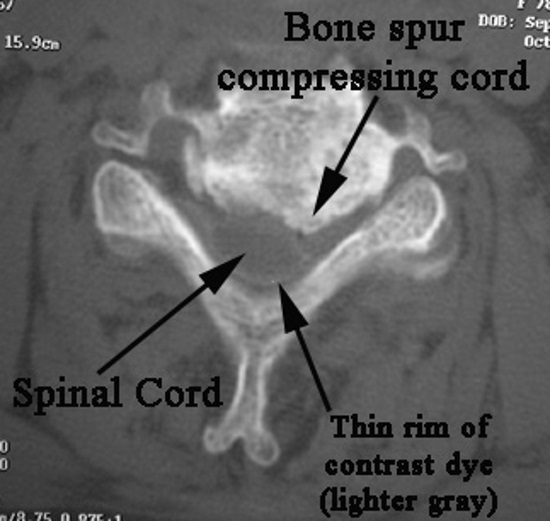
The back side of the spinal bone is cut partially on one side, and completely on the other, and by tilting this posterior (back) side of the spinal bone, the spinal canal is made bigger, with more room for the spinal cord. The opening is maintained on the side where the complete bone cut was made, and the opening is kept in place with a small plate, with or without a bone graft.
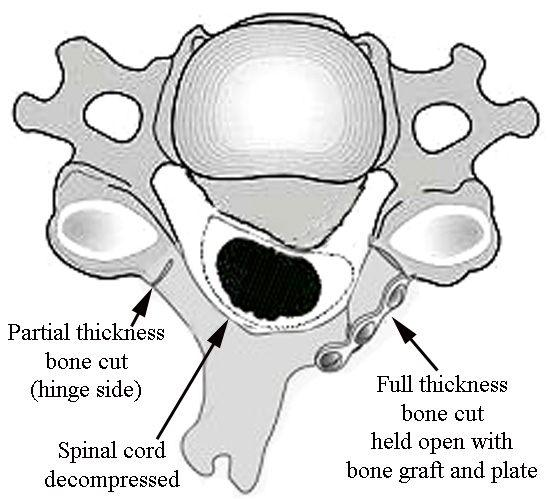
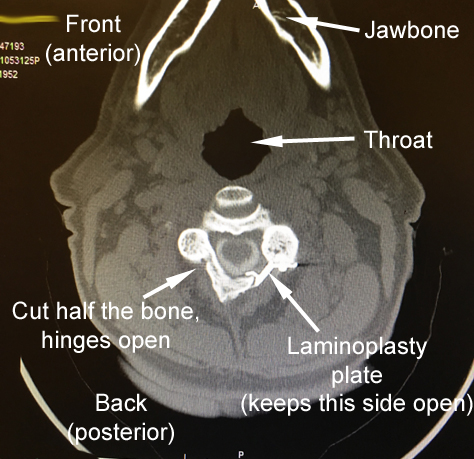
On this cross sectional CT myelogram, the plate holding open the left side can be seen, and the spinal canal is more open. There is fluid all around the spinal cord.
This image, which is from a CT scan after a laminoplasty (on a different patient than illustrated above) shows that there is more room for the spinal cord. In this case, no small plate or screws were used to keep the door open.
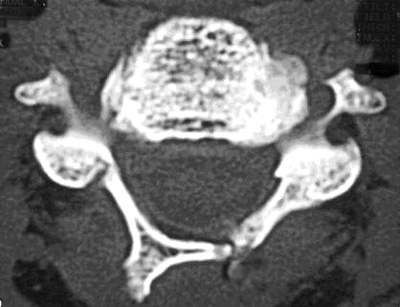
The surgical approach for this operation is from the posterior or back side of the neck. Since more muscles have to be dissected off the back of the spinal bones, there is also a risk of the wound pulling apart as illustrated here. However this complication can be avoided by not using the arms for any strenuous activities, like strong pulling or pushing.
